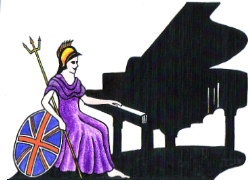Teachers, Accompanists and Piano Entertainers in the UK

UK Piano Page

94 Tilehouse Street
Hitchin
Hitchin, Hertfordshire SG5 2DW
England
We stock Fine Quality instruments, modern second-
3 Newham Street
Bolton, Greater Manchester BL1 8QA
England
The Music Box was established over 25 years ago to
15 Leckey Road
Ballinderry Upper
Lisburn, County Antrim BT28 2QA
Northern Ireland
A.A Music are a leading supplier of new/used
3a Red Brae Drumalig Road
Temple
Antrim, County Antrim Bt27 6UD
Northern Ireland
Specialising in top quality mint condition used
131 Moneynick Road
Randalstown, County Antrim BT41 3HU
Northern Ireland
We Keep a wide range of upright and grand pianos
Music Festival for performers and guests Our 10th
18-06-2022 01:30PM
The Morecambe Bay Piano Group was set up to extend
11-12-2021 02:00PM
The Morecambe Bay Piano Group was set up to extend
08-01-2022 02:00PM
The Morecambe Bay Piano Group was set up to extend
12-02-2022 02:00PM
What is the difference between Overdamping and Underdamping?
Take the same elastic band and place your finger near the centre to stop it from vibrating this is underdamping, which of course is more efficient. Overdamping is controlled by gravity where as underdamping is controlled by adjustable springs so on the whole underdamping is far more efficient than overdamping. However, there is one disadvantage with underdamping. That is, if the dampers are incorrectly aligned to the nodes and antinodes of the vibrating string this will result in, the dampers when they come in contact with the string, emphasising certain harmonics on the piano, thus giving you a harmonic ring, this is more common on small uprights and small grandís as the margin of tolerance decreases as the piano becomes smaller.